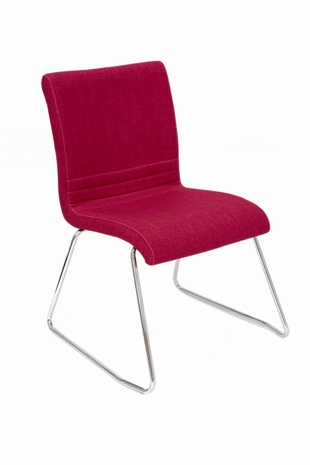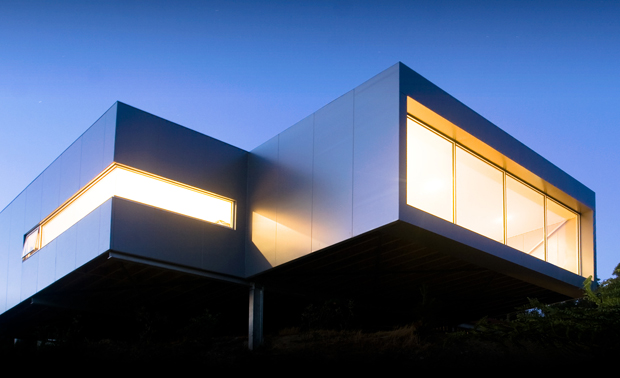When you mention Australian made products many will think of the green and gold triangle label featuring a kangaroo. This is the most well-known symbol associated with Australian made products and comes with a guarantee of trust and quality.
The label belongs to the Australian Made Campaign which promotes Australian made products and is an assurance that the products carrying the logo are genuinely Australian.
Australian Made Campaign marketing and communications manager Ben Lazzaro says in the building and construction sector, reliability is paramount.
"Builders need to be sure that the products they use are of the highest quality, made to high quality and safety standards, and supported locally.
"Buying imported products, which are often cheaper, is a false economy. While the capital cost might be low for some products, the quality of the build is often not up to standard and any recourse measures might be long and drawn out," Lazzaro says.
These imported products often make it difficult for Australian manufacturers, he says, but people are recognising Australian products are far superior and there is often not a huge price difference.
Additionally, Lazzaro says there is a direct correlation between consumer purchasing behaviour and employment, local economic development and prosperity.
Buying Australian made products will keep jobs in Australia and support companies that are manufacturing the product, but also the complementary businesses such as parts suppliers that make up the supply chain, he says.
However, Australian made products face a wealth of challenges, from Australian products not being specified in Government projects through to the cheaper cost of products manufactured in Asia and the high cost to manufacture in Australia.
Spicon managing director Spiros Michaelidis says manufacturing in Australia is not viable.
"Our products are Australian designed, but made offshore due to the high cost of labour. We can't compete here.
"Every manufacturer is facing the same problems."
Spicon have just release the next generation of linkable LED back lighting illumination matrix panels, which were featured in the Innovation Alley at designBUILD. However, Michaelidis says the lighting components of the box were made in Asia, while it was designed and assembled here.
 One exhibitor featured in The Nest at designEX is Anara Maliybeyeva, who has designed this clothes valet named "Tall Poppy" - a piece of furniture that is not commonly used, but Anara decided to tackle a few products that were in desperate need of a come-back. It is made in Australia.
One exhibitor featured in The Nest at designEX is Anara Maliybeyeva, who has designed this clothes valet named "Tall Poppy" - a piece of furniture that is not commonly used, but Anara decided to tackle a few products that were in desperate need of a come-back. It is made in Australia.
Diversified Exhibitions, which organises designEX and designBUILD, exhibition manager Kobe Johns says it is not necessarily about being manufactured in Australia anymore, but that the knowledge and research behind products is Australian.
An increasing number of components in products are made overseas. Often it could cost manufacturers up to three times the price to manufacture and put together a product, but by importing components to make up the finished product, it can be much cheaper, Johns says.
"It's about what businesses can sustain," she says.
Johns says there is a stigma around things made in Asia, but components can be imported, and the product is still designed and put together in Australia. It is an economic tipping point.
 For example, KM Tubular, exhibitors at designEX, bring in components from overseas to make some of its furniture, but it is still Australian made and designed.
For example, KM Tubular, exhibitors at designEX, bring in components from overseas to make some of its furniture, but it is still Australian made and designed.
There is a perception about quality of products and particularly that Asian made products are not as high quality as Australian made, but that perception is changing, Johns says.
"The quality level is increasing, bringing in the competitive nature."
Technology and design are easily shared, and knowledge and research can be of more benefit to Australia, she says.
"Knowledge and research conducted in Australia has got value in the market of tomorrow. It's a sign of the times."
Both designEX and designBUILD promote innovation and technology research in Australia and allow innovations the opportunity to display, particularly in specific areas such as Innovation Alley and The Nest, which feature Australian designers and manufacturers.
"Great tech is being developed here and we want to bring that to architects and designers," Johns says.
Both events have been in the industry for 25 years and continue to be popular.
"People like to attend and look and compare products. People enjoy the face-to-face to see how products feel and work," she says.
An example of this is the Future Living attraction at designBUILD, which brings together suppliers and manufacturers and integrates products into a display, showing how products work.
Two products featured in this are from Askin Performance Panels. The Metric Roofing is a fully insulated ceiling and roof "all-in-one", which is weather-tight and thermally efficient. Its design allows for a reduction in installation costs. The XFLAM Panel is fire-resistant and has superior insulation, reducing energy costs required. Both products are Australian manufactured.
 Askin Performance Panel's XFLAM Panel
Askin Performance Panel's XFLAM Panel
Opportunities for Australian products abroad
There is opportunity for Australian products to be used overseas, as Australian architecture firms are designing more major projects in the Asian market, recently exemplified by Australian architecture firm Woodhead revealing its winning design for Soekarno Hatta International Airport Terminal Three in Jakarta.
BCI Media Group CEO Damian Eastman says there is the assumption that these types of big projects will use Australian or westernised products during construction.
"If they know a product they like, they will use it again, although it does depend on the type of project.
"There is a huge opportunity for them, especially with the huge growth rates in Asian countries."
There is the possibility that it could bring sophistication to the Asian market, he says.

